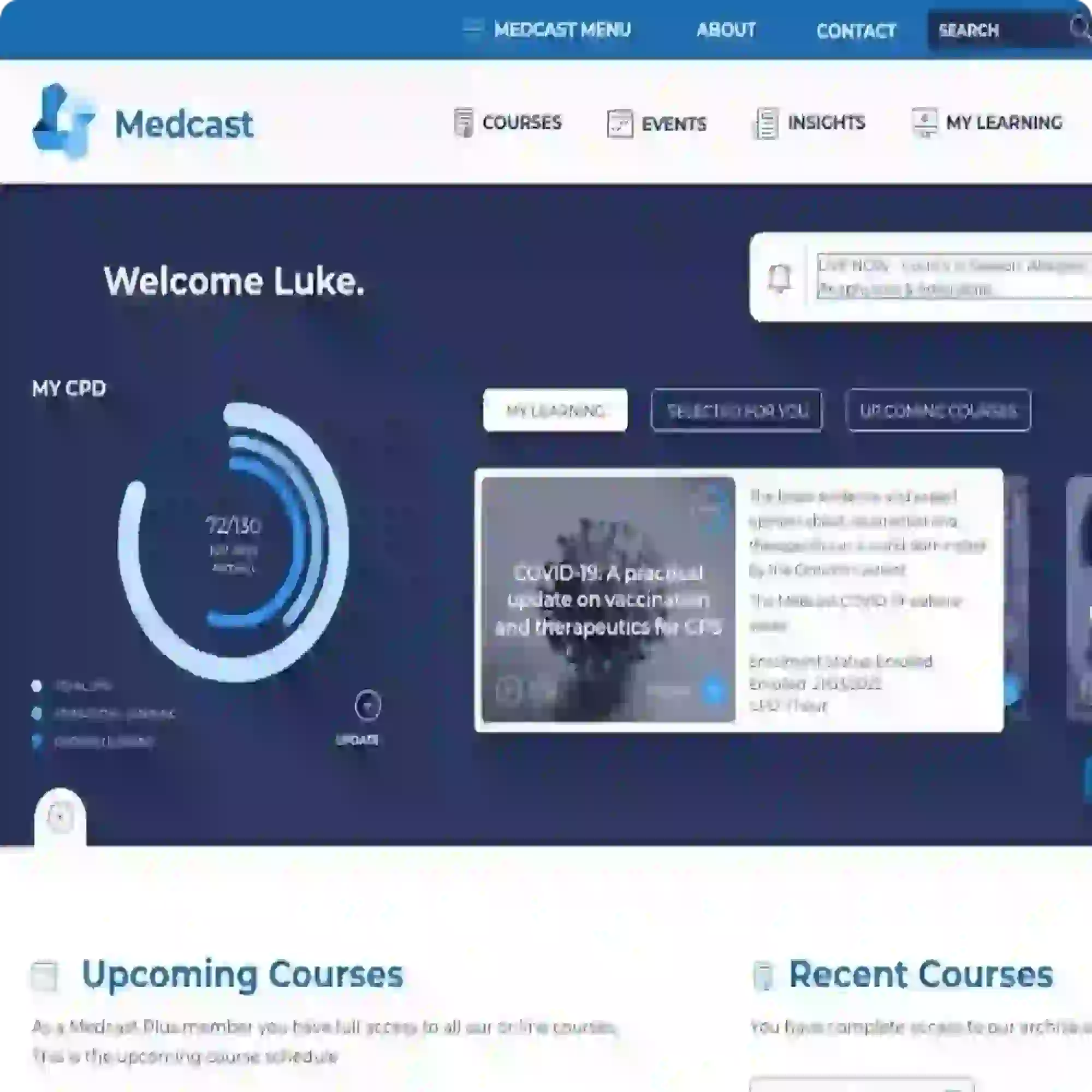Clinical Opal #3 - Sudden hearing loss
Adam is a 34-year-old maths teacher who is usually fit and well, with no significant past medical history. He presents to you complaining of a sudden onset of deafness in the right ear for the past 24 hours. He woke with it and it did not improve at all over the course of the day and evening. He denies any intercurrent illness or other symptoms like pain or tinnitus. It has never happened before.
On examination, his ear canal is clear and the drum normal. Tuning fork testing reveals that Weber test localises to the left (non-deaf) ear, and Rinne test confirms that bone conduction is better than air conduction on the right.
What is the most likely diagnosis of Adam’s deafness and what management should be instituted?
What is the most likely diagnosis of Adam’s deafness and what management should be instituted?
Adam’s clinical presentation is consistent with sudden sensorineural hearing loss (SSNHL). SSHNL is a medical emergency and requires urgent assessment and treatment.1 While there are range of identifiable aetiologies, 90% of cases of SSNHL are idiopathic.
The diagnosis of SSNHL is based on a careful history and examination, mainly to differentiate sensorineural from conductive hearing loss, and to exclude identifiable causes. Urgent audiology is required to evaluate the extent of the hearing loss, and imaging with MRI to exclude retrocochlear pathology (non-contrast CT has poor diagnostic yield).
A widely used treatment of SSNHL is the administration of corticosteroids, either systemically or intra-tympanically. While a 2013 Cochrane review2 found that the value of steroids remains unclear, 2019 practice guidelines recommend that corticosteroids should be offered as initial therapy.3 The recommended dose of oral prednisone is 1 mg/kg/day (up to 60 mg) in a single dose for 7 to 14 days, then tapered over a similar period of time. Early treatment at sufficiently high dose is critical.
References
- Prince A, Stucken E. Sudden Sensorineural Hearing Loss: A Diagnostic and Therapeutic Emergency. J Am Board Fam Med 2021; 34: 216-223.
- Wei BPC, Stathopoulos D, O'Leary S. Steroids for idiopathic sudden sensorineural hearing loss. Cochrane Database of Systematic Reviews 2013
- Chandrasekhar S, Tsai Do B, Schwartz S, et al. Clinical practice guideline: sudden hearing loss (update). Otolaryngol Head Neck Surg 2019;161: 195–210.

Simon is a GP based in Newcastle, NSW, and a senior medical educator with Medcast. He also has medical education roles with the RACGP and GPSA.
Over the past three decades, Simon has worked in clinical and educational roles in NSW and the NT, as well as in the Republic of Ireland. He has published over 75 peer reviewed journal articles, and in 2018 received the RACGP Corliss award for his contribution to medical education.
Simon is passionate about high quality education and training. He has particular interests in GP supervisor professional development and the rational use of tests and medicines. He is a proud member of Doctors for the Environment. He spends his spare time drinking craft beer and pretending that he is a musician in the Euthymics, an all-GP band.
Become a member and get unlimited access to 100s of hours of premium education.
Learn moreMarjory is a 68 year old in-patient who is 2 days post hip replacement. She is on rivaroxaban (xarelto) for VTE prophylaxis. You find her sitting on the floor of the bathroom, alert but in pain.
We explore the case of Edward, a patient with acute kidney injury (AKI), focusing on renal protection strategies. It explores fluid management, blood pressure control, nephrotoxic drug adjustments, and electrolyte monitoring. Treatment considerations include vasoactive medications, dialysis options like CRRT, and medication dosing to support renal recovery and prevent complications.
James, a university student with a history of seasonal allergic rhinitis, presents with sudden respiratory distress following exposure to grass pollen during a soccer game shortly before a summer thunderstorm. Could this be thunderstorm asthma?

